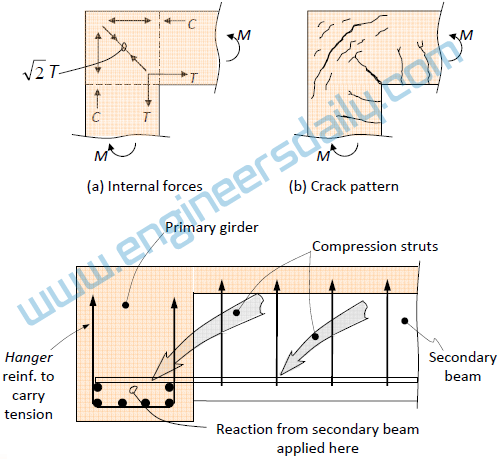There are many causes of tension in reinforced concrete structural members. Most of them will be discussed in this brief article in the form of illustrations. Please provide your feedback in comments section below.
1. Tension caused by bending (and axial tension)
2. Tension caused by load reversals
3. Tension caused by shear and torsion
4. Tension near the supports of beams
- The longitudinal tension at the support is greater than indicated by the bending moment diagram.
- The tensile force at the bottom of the inclined crack is equal to the compressive force at the top of the crack.
5. Tension within the supports of beams and slabs
- Shortening of beams due to shrinkage can cause tension and subsequent cracking in the supports if longitudinal movement is restrained.
- The problem may be overcome by inclusion of appropriate contraction joints.
6. Tension within connections
7. Tension at concentrated loads
8. Tension caused by directional changes of internal forces









